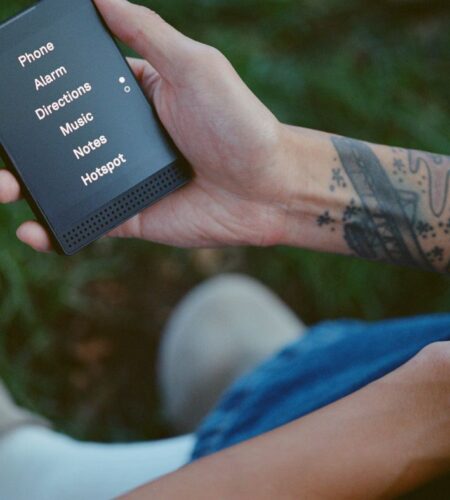As the iPhone marks its 17th anniversary this year, celebrating nearly two decades of revolutionizing how we interact with technology, an unexpected trend is gaining momentum: people are increasingly turning away from their sophisticated, high-tech smartphones in favor of simpler, so-called “dumbphones.” This shift is not merely a nostalgic nod to the past; it’s a thoughtful reaction to the mounting realization of how constant connectivity can negatively impact our mental health and daily lives. As we navigate a world where our devices are always within arm’s reach, many are choosing to embrace the simplicity of dumbphones as a way to reclaim their focus, reduce stress, and foster a more mindful, balanced lifestyle.
A Counter-Culture to Constant Connection
Smartphones have become central to modern life, influencing how we communicate, work, and entertain ourselves. Yet, as people have adapted to these devices, they’ve also come to understand their downsides. Studies and personal experiences alike highlight how smartphones can undermine concentration, disrupt sleep, and worsen mental health issues. In response, some are turning to dumbphones—basic devices that offer calling, texting, and a few essential functions without the constant barrage of modern app notifications.
Embracing a Digital Detox
For those feeling overwhelmed by endless notifications and social media demands, dumbphones provide a welcome break. This trend aligns with a broader digital detox movement where people seek to reconnect with simpler, more meaningful aspects of life. Whether resembling nostalgic 90s flip phones or sleek, modern models, dumbphones offer a solution. They allow users to stay connected without the noise and distractions typically associated with smartphones.
Diverse Motivations and Market Realities
The appeal of dumbphones extends across various groups. Parents are using them to keep their children away from smartphone distractions, while seniors and workers in demanding industries appreciate their simplicity and durability. Even those looking to save money are drawn to dumbphones as an affordable alternative to high-priced smartphones, which can cost upwards of $500, with flagship models reaching as much as $1,600. Additionally, abandoning smartphones has become a trend with teenagers eager to escape the pressures of social media setting themselves up as neo-Luddites. These diverse motivations highlight a growing desire for simplicity and mindfulness in a world increasingly dominated by digital noise.
Despite this growing interest, major phone manufacturers are largely uninterested in expanding their dumbphone lines. Smartphones dominate new phone sales, and tech giants have little financial incentive to invest in basic devices. The market for dumbphones remains small, with feature phones accounting for just 2% of handset sales in the US. However, this niche market still represents a significant number of devices, with feature phone sales expected to reach 2.8 million by the end of 2023.
The Premium Niche and Future Prospects
For many, simply using an old phone isn’t a practical solution. Outdated devices often become obsolete as technology advances, particularly as 2G and 3G networks are phased out. Additionally, many modern jobs require smartphones with app capabilities, making it challenging for individuals to rely on older models. Consequently, those seeking to downsize may need to invest in newer, yet simplified devices.
To meet this demand, some companies are embracing a niche premium approach. For example, New York-based Light offers customizable “Light Phones” designed for digital detoxers who want minimal distractions while retaining a stylish and functional design. Similarly, Swiss brand Punkt has introduced a $750 simplified smartphone aimed at high-end consumers seeking a refined dumbphone experience.
Furthermore, companies like Ghost Mode provide innovative solutions by reprogramming existing smartphones to function as simplified devices. This service allows users to reduce their digital footprint while keeping essential functionalities, though it comes with a premium price tag of $600.
Navigating the Digital Balance
Switching to a basic phone is a personal decision, often motivated by a desire for a more focused and intentional lifestyle. As Jose Briones, author of Low Tech Life: A Guide to Mindful Digital Minimalism, suggests, assessing which apps are truly essential and finding simple devices that offer those functions can be a practical step toward achieving digital balance.
In conclusion, the rise of dumbphones reflects a growing desire for simplicity in an era overwhelmed by complex technology. As people become increasingly aware of the downsides of constant connectivity, such as diminished focus and heightened stress, many are turning to basic phones as a means of regaining control over their lives. By choosing devices that prioritize fundamental communication over endless digital distractions, individuals are discovering a path to reclaim their time, enhance their focus, and improve their overall well-being. In a world where digital overload is becoming the norm, embracing the simplicity of dumbphones offers a refreshing way to reconnect with what truly matters and find balance amidst the chaos.



